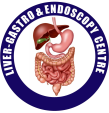What is Fibroscan?
A non-invasive diagnostic tool called Fibroscan Testing, which is FDA-approved, is used to detect liver fibrosis brought on by various liver illnesses. Outpatient Fibroscan testing is similar to receiving a standard liver ultrasound examination in that it is rapid, painless, simple, and offers a non-surgical substitute for the standard liver biopsy to evaluate liver disease.
What to expect once you arrive for the Test / How should I get ready for the fibroscan?
- There are basically no strict protocols to follow before Fibroscan, except that you have to maintain a fast for 3 hours prior to the procedure
- Plan to arrive 15 minutes before the procedure’s scheduled start time.
- Please bring a list of your current medications and your ID.
- There is no sedation required with Fibroscan. To and from the test, you can drive yourself.
- The process lasts for roughly five minutes. About 30 minutes will pass throughout your appointment.
- Your right arm will be elevated behind your head as you lay on your back for the surgery, exposing your right abdominal region (wear loloose-fittinglothing)
- A water-based gel will be applied to your skin by a medical professional, who will then place a non-invasive probe over your liver.
- You could experience a tiny vibration on the skin at the probe’s tip when it delivers ultrasonic waves to the area to be measured during the examination.
How is Fibroscan different from a traditional biopsy?
The measurement of scarring and fat accumulation, or “fatty change,” in your liver using a specialist ultrasound-based device is a more recent method for identifying fatty liver disease. Fibroscan is rapid, simple, and painless like other ultrasound examinations. Also, it doesn’t carry the same hazards as an invasive biopsy because it is non-invasive.
There is no specific preparation needed for a Fibroscan, but you might be advised to fast for a few hours prior to the procedure. It simply takes a few minutes, is absolutely painless, and doesn’t require sedation. You won’t need any extra instructions or recovery time after a Fibroscan; you’ll be back on your feet in a matter of minutes.
How does Fibroscan work for fatty liver?
In fatty liver disease, an accumulation of fat cells results in fibrosis, a form of scarring. The amount of liver fibrosis is one indicator of the severity of the fatty liver disease. The liver tissue becomes stiff due to fibrosis.
Vibration-controlled transient elastography is a technique employed by fibro scan, which gauges the velocity of ultrasound waves as they pass through the liver. The normal liver tissue and the areas of fibrosis are both affected by the ultrasound waves’ varying velocities.
Immediately after the scan, the results of a Fibroscan are available. You can create a plan for therapy or additional testing with the help of your doctor, who can also interpret the test results.
Lifestyle changes can help reverse Fatty Liver in many cases. If you are concerned about developing fatty liver disease, you can consult an experienced liver specialist about Fibroscan.
